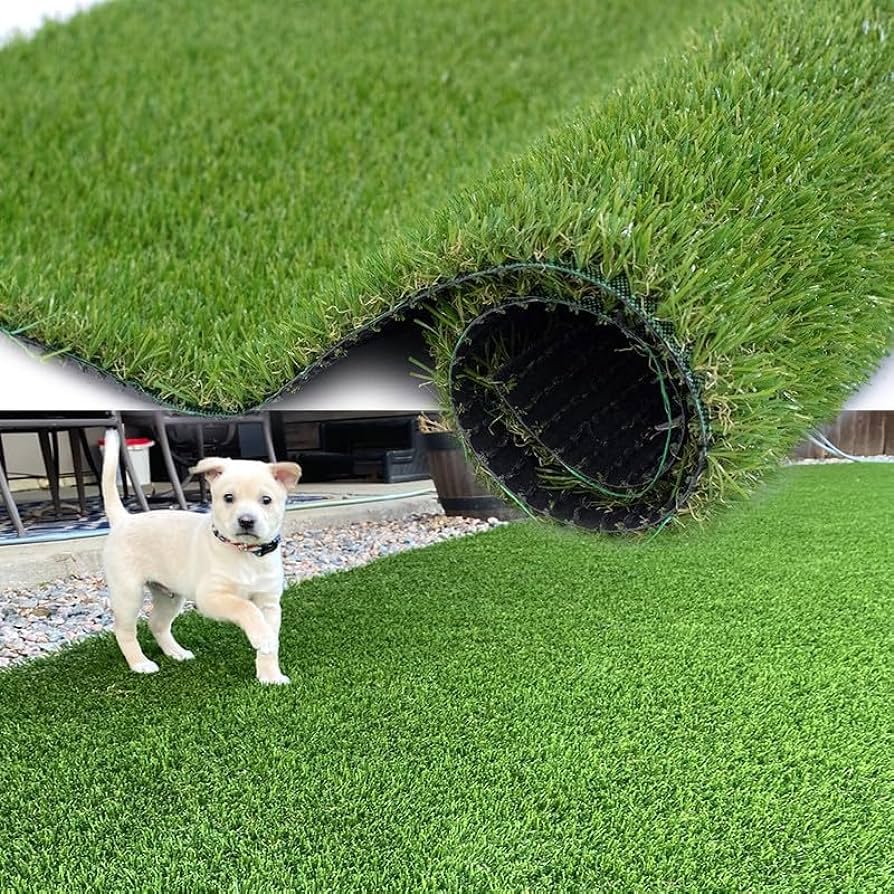Introduction
Transforming your outdoor space into a dog-friendly haven with artificial grass is a fantastic way to provide your furry friend with a safe, comfortable, and low-maintenance play area. But before you lay down the turf, it’s crucial to lay a solid foundation. The base material you choose will significantly impact your dog’s comfort, drainage, and overall experience. This guide will walk you through the essential base materials, installation process, and maintenance tips to ensure your dog’s artificial grass paradise thrives for years to come.
Choosing the Right Base Material
The foundation of your dog’s artificial grass installation is the sub-base, a layer of material that provides stability, drainage, and a comfortable surface for your canine companion. Here’s a breakdown of the most common options:
1. Crushed Stone or Gravel:
- Pros: Excellent drainage, helps prevent water pooling, and provides a solid base for jumping and running.
- Cons: May not be as soft as other options, and can be noisy.
2. Decomposed Granite:
- Pros: Compact and provides a solid base, allows for drainage, and is comfortable for dogs to walk on.
- Cons: More expensive than crushed stone or gravel.
3. Sand:
- Pros: Soft and comfortable for dogs, good for digging and playing.
- Cons: May not drain as well as other options, leading to potential odor issues.
4. Rubber Mulch:
- Pros: Durable, cushioning, and has good drainage properties.
- Cons: Can be more expensive than other options.
5. Artificial Turf Infill:
- Pros: Comes with infill options like silica sand or rubber pellets, providing cushioning and support while promoting drainage.
- Cons: May require specific infill installation techniques.
Pet-Safe Drainage Systems:
- Consider installing a drainage system beneath the artificial grass to help manage urine and prevent odors. This can be a simple trench system or a more elaborate drainage system with a perforated pipe.
Additional Tips:
Odor Control:
- Whichever base you choose, consider adding a layer of pet-safe deodorizing granules or enzyme cleaners to help neutralize odors. These products break down urine and feces, preventing unpleasant smells.
Maintenance:
- Regularly clean the artificial grass by rinsing it with water to remove debris and any waste. This will help maintain hygiene and odor control.
By selecting the right base and incorporating odor control measures, you can create a comfortable and functional space for your dog.
FAQ
Q: How deep should the base be for artificial grass for my dog?
A: A depth of 3-4 inches is typically sufficient for residential installations.
Q: What is the best infill material for artificial grass for my dog?
A: Silica sand or rubber pellets are popular choices for infill, providing cushioning and drainage.
Q: How often should I clean the artificial grass for my dog?
A: Regularly rinsing the artificial grass with water, at least once a week, is recommended to remove debris and prevent odors.
Q: Can I use gravel for my dog’s artificial grass base?
A: Yes, gravel can be used as a base material, but it may require more frequent maintenance due to its susceptibility to settling.
Transform your outdoor space with the beauty and durability of artificial grass. We offer free artificial grass samples.We’re a leading artificial grass manufacturer in China, and we’re here to help you every step of the way. Get a free site plan and quotation plan from our experts.

